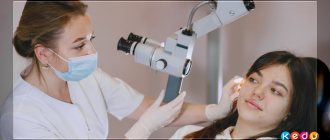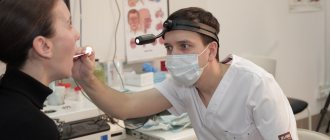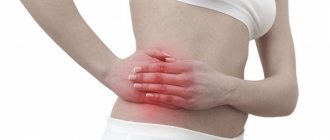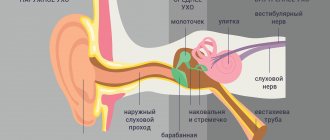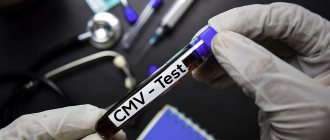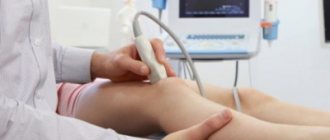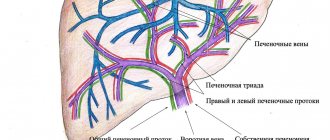The term “diathesis” in domestic medicine refers to a feature of the body’s constitution, which is expressed in a predisposition to certain diseases. Usually, diathesis refers to allergic diathesis, the most common and easily diagnosed. According to various sources, diathesis occurs in 30-75% of children.
Unlike allergies themselves, diathesis is not associated with functional disorders of the immune system. An allergic reaction during diathesis in infants is usually explained by the characteristics of the child’s body. In children of the first year of life, the protective function of the intestine is reduced: the intestinal walls are thin, the amount of enzymes and antibodies produced is small. As a result, the child’s body may not be able to cope with a large number of highly allergenic foods and give an allergic reaction. By two to three years, the amount of enzymes becomes sufficient, and diathesis in most cases goes away.
Clinical manifestations of rosacea
The disease begins after 25-30 years. First, there is a tendency to frequent redness of the face, less often the neck and décolleté. “Burst blood vessels” (telangiectasias) appear. Then the redness in some areas becomes persistent. Subsequently, inflammation, peeling, and rashes (outwardly resembling pimples) may develop at the site of persistent redness. Without treatment, the number of such elements increases. Dryness and redness of the eyes often develop. In a small proportion of patients, with age, the so-called rhinophyma develops, a thickening and growth of the skin of the nose (“bumpy nose”).
Types of rosacea: A - Erythematotelangiectatic rosacea, B - papulopustular rosacea, C - rhinophyma, D - ocular rosacea. Photo: Dermatology Reports / Open-i (CC BY-NC 3.0)
The cause of rosacea is impaired vascular tone of the face and inflammation in the vascular wall. They can be caused by various factors: hormonal disorders, characteristics of psycho-emotional status, diseases of the cardiovascular or digestive system, microbial factors. A doctor must understand the possible causes of the development of rosacea in a particular person and analyze the degree of influence of a particular health feature. The main task is to minimize external and internal factors that aggravate rosacea, and to directly affect the blood vessels of the face. Treatment regimens are chosen by the doctor; they are strictly individual in nature.
Photo: Dermatology and Therapy / Open-i
Causes of diathesis
If in childhood the occurrence of diathesis is associated with incompletely formed organ systems, then in adults the causes are several factors combined with each other. This can be nervous overload, depression, chronic fatigue, etc. They provoke the release of certain substances into the blood that cause immune reactions.
There are a huge number of risk factors. What causes diathesis on the face in adults:
- due to systemic diseases of internal organs;
- poor nutrition;
- alcohol abuse and smoking;
- diseases of the endocrine system;
- allergies to sweets;
- exposure to low temperatures.
What happens in the skin?
Redness, no matter what causes it, represents increased blood flow to the skin. The vessels dilate greatly and contract with difficulty. Some of the fluid from the overcrowded vessels can seep into the surrounding tissues - swelling occurs.
Proteins and blood cells may also leak out. The condition of connective tissue fibers and muscles that help blood vessels contract and drain blood and lymph from the skin deteriorates. Stagnation and low-grade inflammation occurs in and around the vascular wall. Opportunistic and pathogenic microorganisms can join this inflammation, which weakens the skin’s defenses.
Rosacea treatment
Treatment of rosacea using intense pulsed light (IPL) technology.
Photo: BioMed research international / Open-i (CC BY 3.0) Therapy for this disease depends on the totality of manifestations and characteristics of a particular person. There is a classic treatment regimen for rosacea, accepted in dermatology. These are antibiotics, metronidazole, retinoids, antihistamines, local therapy.
Creams, gels, ointments containing azelaic acid, metronidazole, retinoids, pimecrolimus, and antibiotics are used topically. Treatment lasts several months. As prescribed by a doctor, various combinations of medications and their alternation can be used. Historically, ointments and pastes with ichthyol, tar, sulfur, and salicylic acid were widely used. Often they are still used today due to their low price, but all these products irritate the skin.
The main treatment should be aimed at eliminating provoking factors and restoring the normal state of blood vessels. Triggers vary from person to person, but the clear leader is excessive emotional reactions.
Symptoms of diathesis
Inflammation of the skin during diathesis is the body's reaction to contact with an allergen. The main way an allergen enters a child’s body is food, but a reaction to contact with the skin of the allergen is also possible (the allergen, for example, can be components of washing powder that get on clothes during washing, plant pollen, dust, animal hair, etc.).
Diathesis in children under 3 months of age
The first manifestations of diathesis most often appear at the age of 2-3 months. This:
- diaper rash that does not disappear even with careful care;
- profuse prickly heat with mild overheating;
- sebaceous crusts of gray-yellow color on the head in the hairline area (seborrhea).
Diathesis in children aged 3 months and older
In older children, a typical manifestation of diathesis is red spots on the cheeks. As the condition worsens, the skin becomes crusty. The crusts become wet, the child experiences discomfort, itches, becomes excitable, sleep and appetite may be disturbed, and loose stools may appear.
Physiotherapy has all these qualities.
The first stage of therapy, the longest, is to reduce swelling and inflammation in and around the vascular wall. Two methods are suitable for this. Laser-magnetic therapy is a combination of red and infrared laser radiation with a constant magnetic field. A powerful anti-edematous and anti-inflammatory effect on the vascular wall promotes the outflow of excess blood and lymph from the face.
Mens therapy, better known as microcurrent . A mild anti-inflammatory effect, restoration of normal tone of the neuromuscular system that regulates vascular contraction, normalizes vascular reactions to external influences.
Both procedures are prescribed 2 times a week, a total of at least 12-20 procedures are required. Depending on the prevalence of specific symptoms, you can start with microcurrent (redness and hot flashes predominate) or laser-magnetic therapy (swelling and inflammation predominate). For optimal results, it is advisable to use both methods. The procedures are inexpensive and painless, but require regular visits to the doctor (2 times a week for 30-40 minutes). The earlier treatment is started, the more effective and shorter it will last. After the procedures, maintenance therapy is prescribed.
In addition to physical therapy, medications may be prescribed that are selected individually. Efficacy is assessed as treatment progresses; drugs may be changed or combined.
Second phase. After stabilization of the situation, persistently dilated vessels that cannot be eliminated by therapeutic methods are removed.
One of the most effective and gentle methods for removing “vessels” is the use of a neodymium laser with a short powerful pulse. Delivery of such a pulse with an absorption spectrum in oxyhemoglobin (a blood component) promotes the removal of blood vessels without damaging the surrounding tissue.
Methods of treating diathesis
There are several methods to cure diathesis on the cheeks, arms or legs. First, you need to contact a professional dermatologist who will prescribe the necessary diagnostic measures. In addition to collecting anamnesis and external physical examination, urine and blood tests, immunological tests and allergy tests are necessary.
How long it takes for diathesis on the cheeks to go away directly depends on how timely treatment is started. It is equally important not to self-medicate, since incorrectly selected methods and means can only worsen the condition and lead to more frequent relapses.
The PsorMak clinic takes a very careful approach to the diagnosis and treatment of diathesis. This primarily consists of individually drawing up a treatment regimen, which necessarily includes a diet and a set of measures to prevent exacerbations.
A very important condition of treatment is to eliminate the influence of factors that can provoke a relapse. This means that the topical medications used must be effective, but have a mild effect. To achieve this, specialists at the PsorMak clinic developed an original recipe for an ointment based on natural ingredients without a hormonal component.
The treatment complex includes:
- acupuncture and hirudotherapy;
- local treatment with natural ointment;
- ingestion of medications (for itching, allergies, stress and other causes or symptoms of the disease);
- adherence to diet and proper lifestyle.
Do not delay your visit to a specialist, since the duration of remission that treatment can provide depends on this. At the PsorMak clinic, you will be able to quickly select effective therapy that will help you achieve good results and get rid of unpleasant symptoms of the disease for a long time. To make an appointment, write to us in the form on the website or call +7 (495) 150-15-14.
Differences between rosacea and rosacea
Cuperosis.
Photo: evgeniasheidt / freepik.com Cuperosis is the appearance of “bursted” blood vessels (telangiectasia) on the face and body. This may be the initial manifestation of rosacea or an independent disease. The difference from rosacea is that there is no progression in the form of inflammation and the appearance of rash elements. The concern is not so much the persistent diffuse redness as the presence of “vessels”. If rosacea is mild, manifested by single vessels, then treatment is limited to their removal. If the presence of “vessels” is accompanied by “hot flashes” to the face, heaviness and swelling in the legs, etc., you should consult a doctor to have a consultation and find out whether there are signs of rosacea or, if the “vessels” are located on the legs, varicose veins.
The editors thank the specialists of the BioMI Vita clinic for their assistance in preparing the material.
Cheeks are burning and blushing. What do rosy cheeks tell the doctor?
A ruddy complexion has long been considered an indicator of good health. But is it only the blush on the cheeks that can signal this? Why does he appear?
How's normal?
The facial area is rich in blood vessels of different diameters. Usually small vessels are not clearly visible, and therefore the complexion is pale or slightly pinkish.
The reason for the appearance of blush on the cheeks and redness of other areas of the face can be exposure to the cold. Blushing occurs at elevated temperatures, in a stuffy room. Drinking red wine or hot pepper will also add redness to our cheeks.
Could blush be a sign of pathology? It turns out yes. Let's briefly look at some of them.
Increased body temperature. Of course, not every infection is accompanied by fever, but, for example, for widespread colds, this symptom is not uncommon. Do you see the blush on your cheeks? Measure your body temperature - perhaps the cause is a feverish state. In this case, there are often other manifestations: general weakness, deterioration or lack of appetite, body aches, cough, runny nose, as well as other symptoms characteristic of a particular disease.
Read the material on the topic: What is ARVI?
Scarlet fever. A relatively rare infectious pathology today. The group A streptococci that cause it secrete a special toxin that leads to diffuse redness of the skin with a pinkish-red tint. With scarlet fever, fever, skin rashes, and a crimson-red color of the tongue are noted.
Remember that elevated body temperature can indicate not only infectious diseases: it also occurs in diseases that are not in any way related to infections.
Another cause of facial redness is overheating .
An unhealthy blush may indicate an allergy .
Rosacea. With this disease, the vascular network grows, the skin on the face thickens. In addition to redness, nodules and pustules appear on it, itching is noted, and the secretion of sebum increases. One form of this disease is rhinophyma, when the skin on the nose thickens significantly.
The facial skin also turns red with various dermatitis and acne.
Itsenko-Cushing syndrome . Develops with excessive release of glucocorticoids (a type of hormone) - for example, a neoplasm of the adrenal gland, a lipid cell tumor of the ovary; prolonged administration of drugs containing glucocorticoids (in this case, drug-induced Itsenko-Cushing syndrome occurs).
Manifestations of pathology include obesity; rounding the contours of the face; red-violet “stretch marks” on the skin of the abdomen and thighs; increased blood pressure and a number of others.
Systemic lupus erythematosus (SLE). It develops when cells and tissues are attacked by their own antibodies and immune complexes. The manifestations are varied. In addition to the “butterfly” flush of the cheeks, joint pain, fever, malaise, damage to the oral mucosa, and often widespread or local hair loss are noted. An increase in various groups of lymph nodes is often observed (especially in children and young people); in 10% of patients, an enlargement of the spleen is detected.
Read the material on the topic: What diagnostics do you need to undergo before planning a pregnancy?
Damage to the cardiovascular, bronchopulmonary, nervous, digestive systems, kidneys, and hematopoiesis is also possible. In addition, women can have early and late miscarriages. During pregnancy, the disease may worsen.
Mitral stenosis . One of the heart defects. The cause is rheumatic fever. The basis of this disease is a narrowing of the opening between the left atrium and the left ventricle.
High blood pressure . In addition to an objective increase in blood pressure and other symptoms, one of the signs may be redness of the skin of the face.
Read the material on the topic: For what reasons does blood pressure increase?
Diabetes. This disease affects a large portion of the population around the world. Symptoms include: increased thirst, increased frequency of urination and the release of large amounts of urine, general weakness, and fatigue. Sometimes there is an increase in appetite. Possible weight loss, nausea, vomiting, blurred vision. Wounds heal worse, and there is a predisposition to bacterial and fungal infections. Redness of the cheeks is also common.
Read the material on the topic: How to determine diabetes?
Hypothyroidism . A syndrome that develops when there is a lack of thyroid hormones in the body, or a decrease in their biological effect at the tissue level.
Manifestations of hypothyroidism are usually nonspecific. Some of them: increased body weight (even obesity), brittle hair, snoring at night, a feeling of chilliness, swelling under the eyes in the morning, decreased heart rate, constipation, deterioration of memory or attention, depression, depression. In women, the menstrual cycle may additionally be disrupted.
In laboratory tests - an increase in cholesterol levels, a decrease in hemoglobin levels.
Menopause . Due to hormonal changes, among other things, so-called hot flashes may occur, with warming and redness of the skin (especially the face, head and neck).
Polycythemia vera . Chronic pathology of the blood system, which is based on an increase in the total mass of red blood cells. In addition to facial redness, there are symptoms such as general weakness, headache, dizziness, blurred vision, fatigue and shortness of breath. Itching is often observed, especially after a hot bath; enlarged liver, in > 75% of patients - spleen.
Theoretically, facial redness can also occur with increased formation of red blood cells of a different origin.
Erythrophobia (blushing syndrome, erythrophobia, stress flushing of the face) . A type of neurosis characterized by a pathological fear of blushing in the presence of people. This fear itself can cause the skin to become red. It is based on dysfunction of the autonomic nervous system.
Read the material on the topic: Vegetative-vascular dystonia: diagnosis or fiction?
Carcinoid syndrome . It develops when there is a carcinoid in the body - a tumor from a certain type of cell of the neuroendocrine system. There is a rush of blood to the face and neck caused by emotional stress or ingestion of food, hot or alcoholic drinks. Complaints of abdominal cramps and diarrhea are common. There may be a deficiency of vitamins and proteins, and anemia due to deterioration of absorption processes in the small intestine. Damage to the heart valves and the appearance of murmurs are possible; weakened sexual desire and erectile dysfunction.
Taking certain medications can also cause facial redness
What to do?
We have listed some of the possible reasons for this manifestation. To find out what kind of disease a blush on the cheeks and other areas of the face may be a sign of, you must definitely seek medical help. If the situation is not an emergency, you can first consult a general practitioner or therapist. Depending on what diagnosis is made or suspected, consultation with related specialists may be necessary.
Since pathologies relate to different organs and systems, the range of prescribed studies may also be different.
Text: Enver Aliyev
